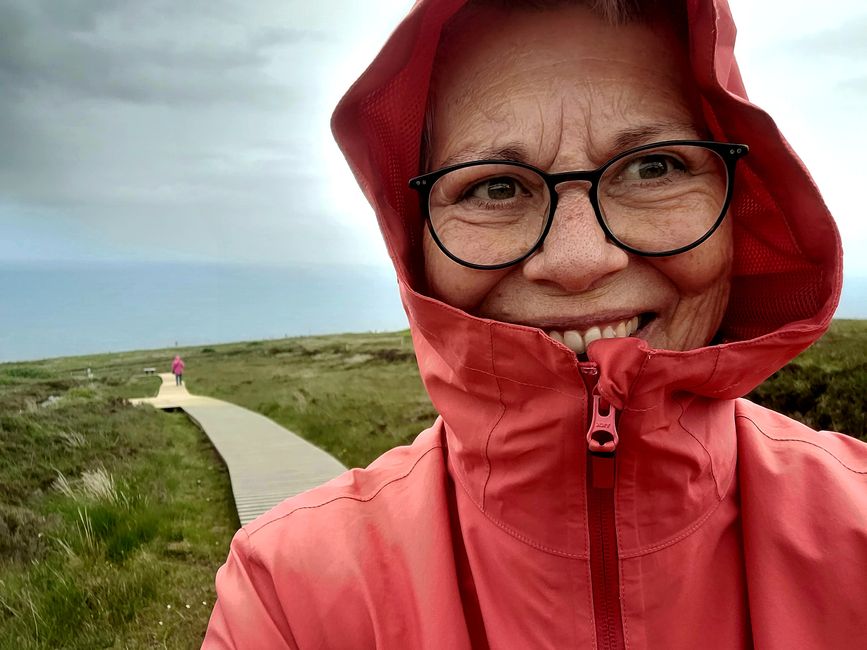
The Wild Atlantic Way - eine Reise entlang der irischen Westküste
vakantio.de/the-wild-atlantic-way-die-irische-westkuste
Derry & the Bloody Sunday & Midsummer at the northernmost point of Ireland - Malin Head
Buga: 11.01.2023
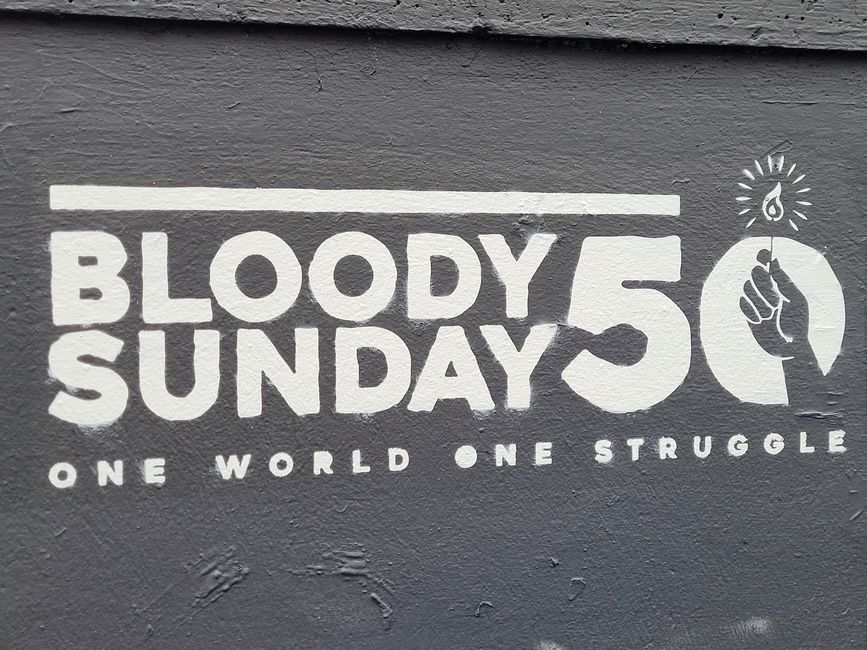
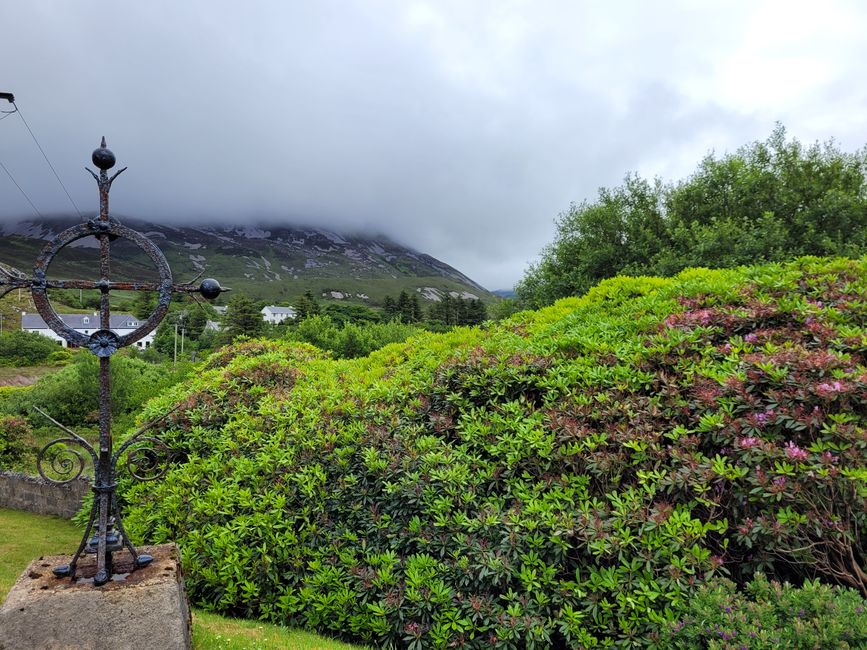
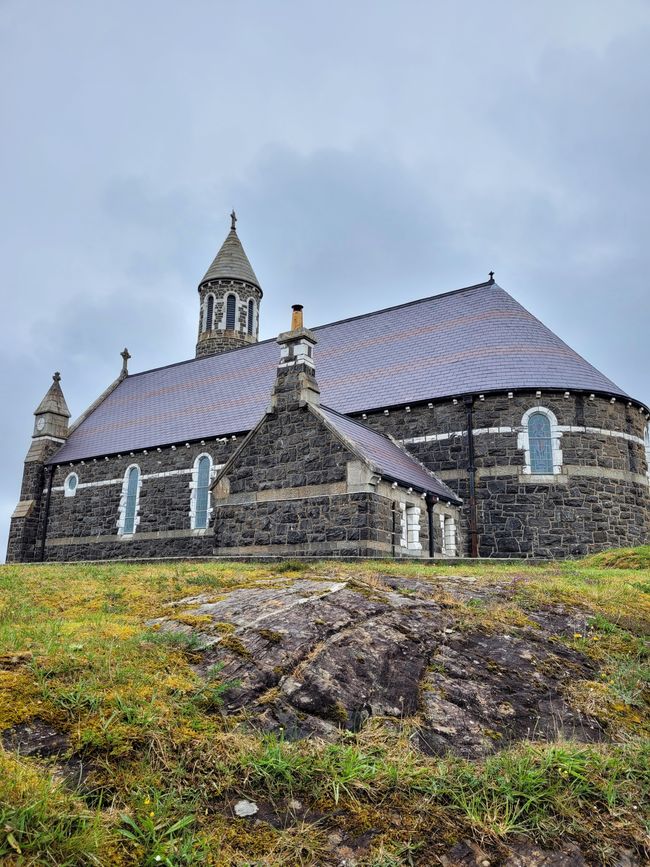
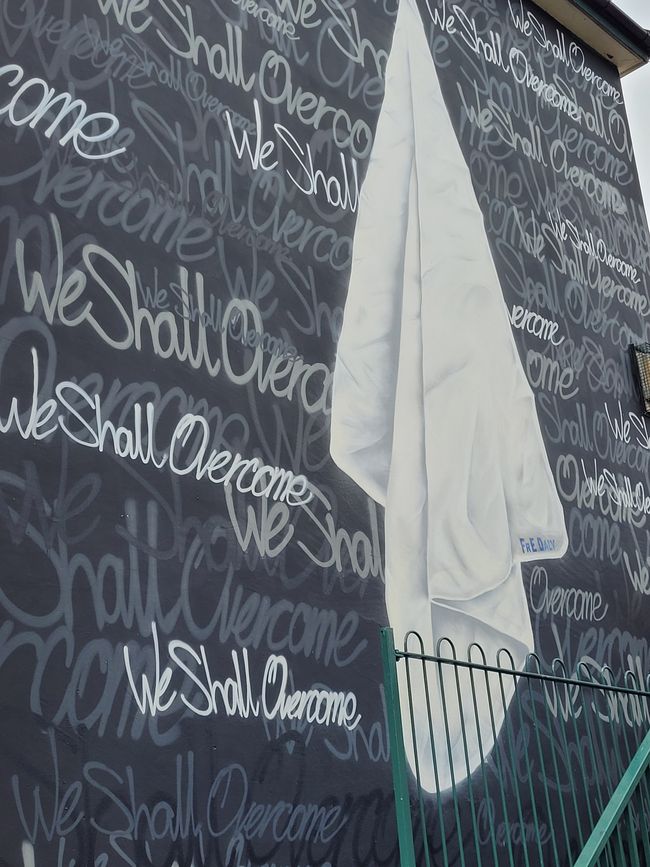
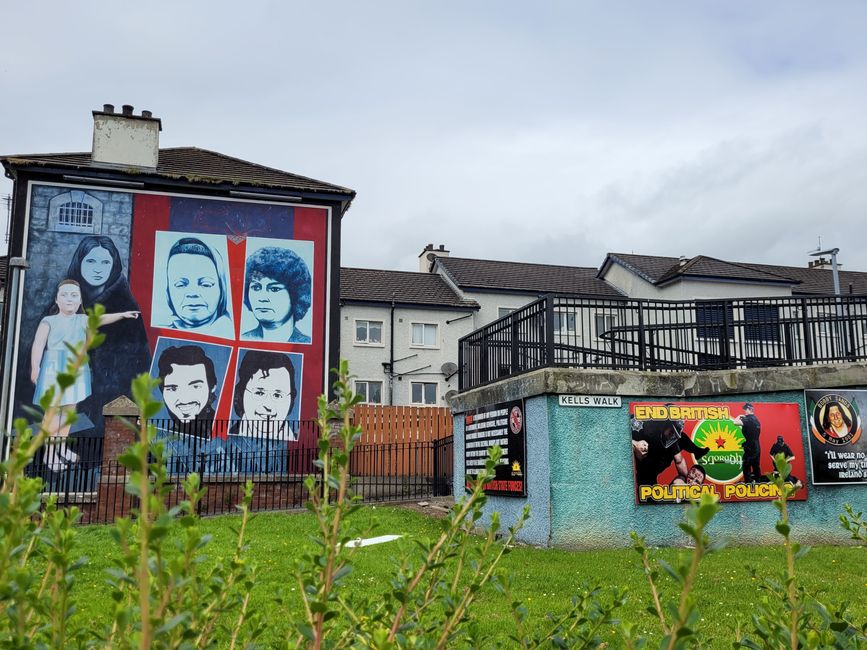
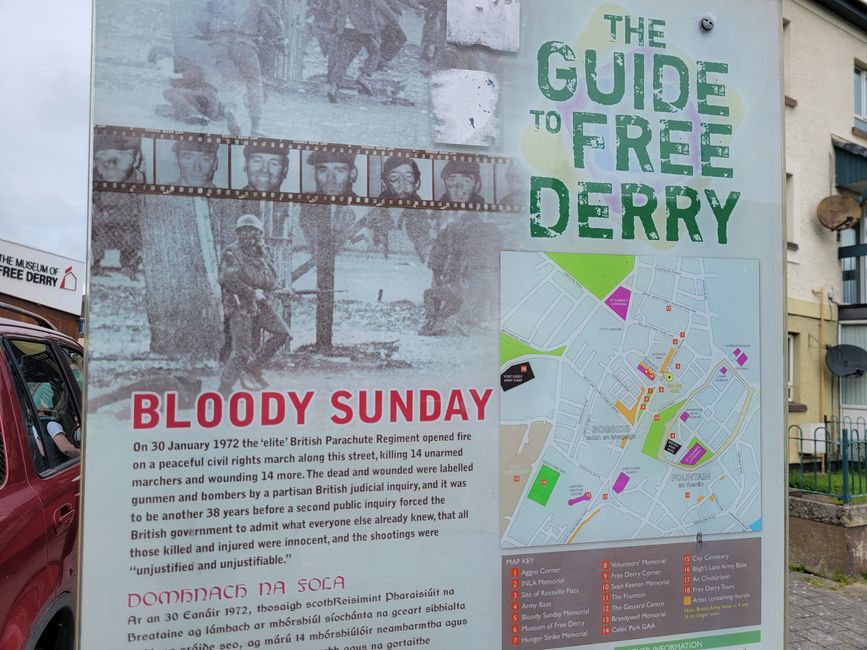
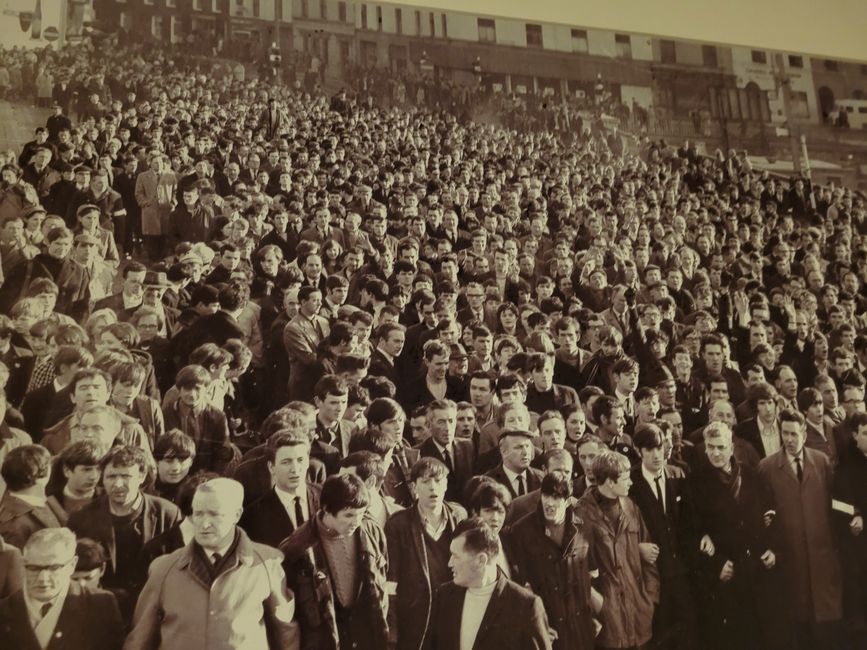
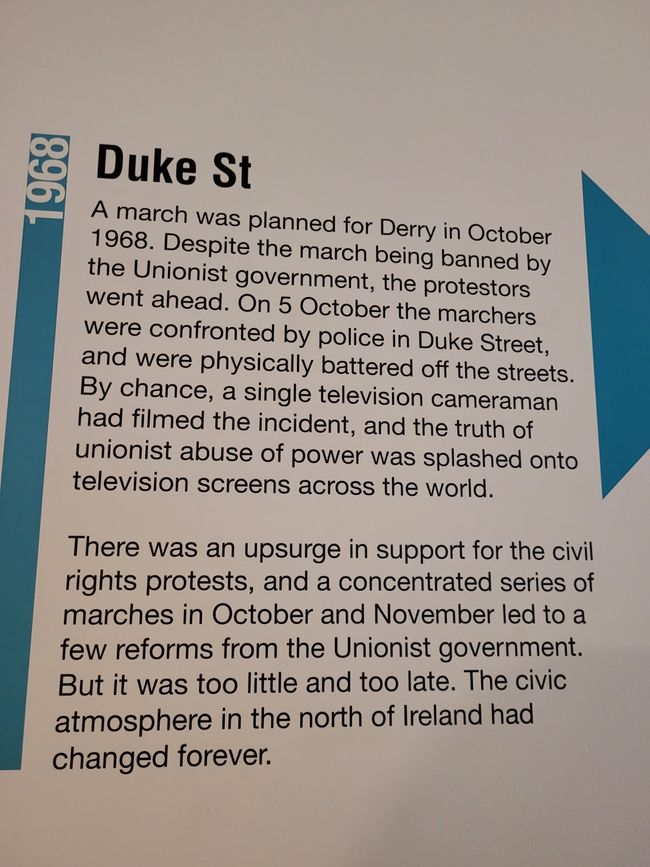
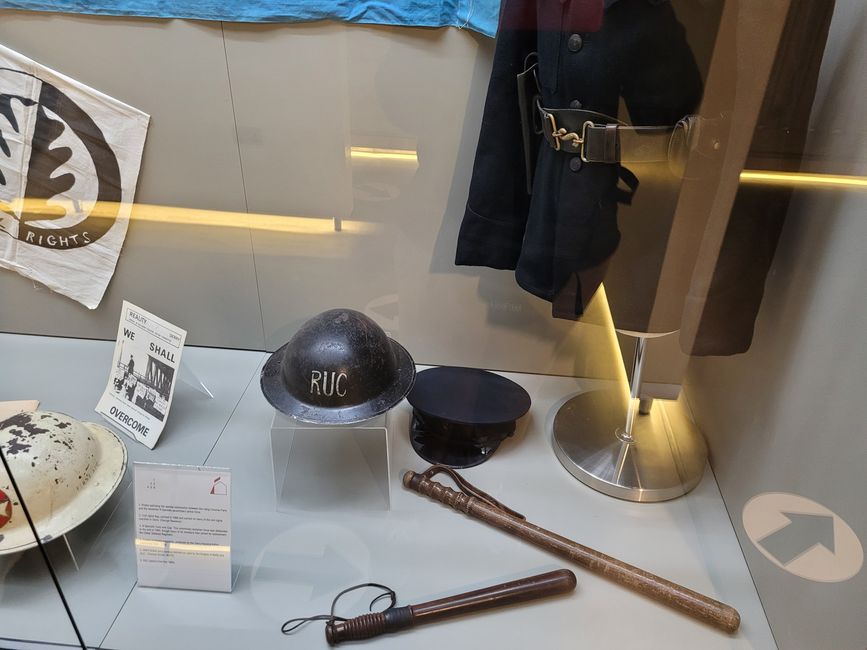
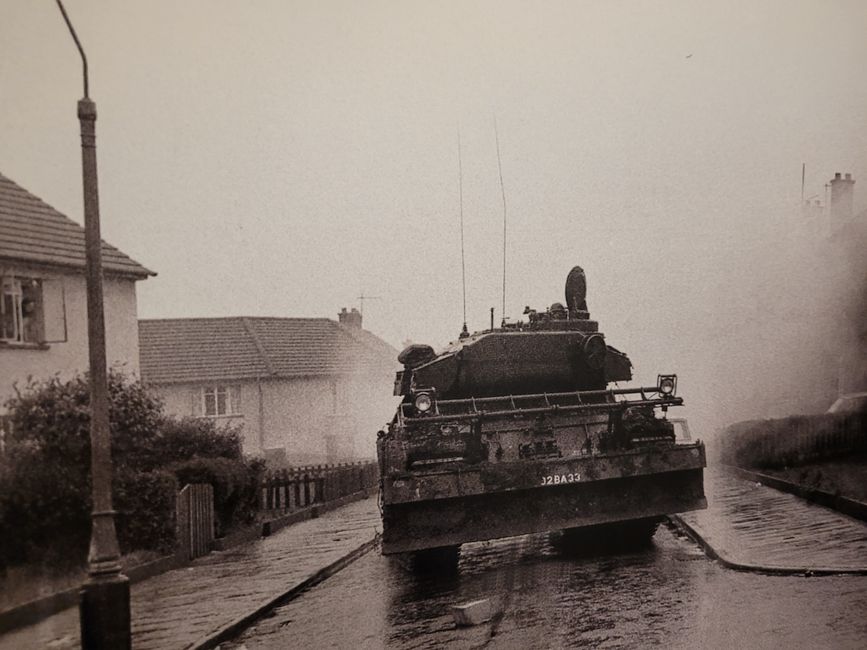
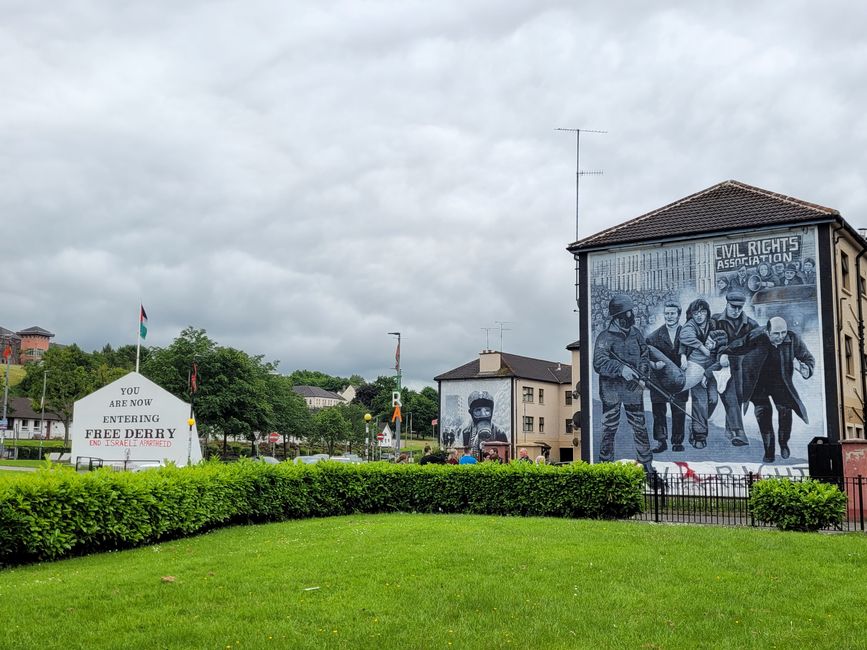
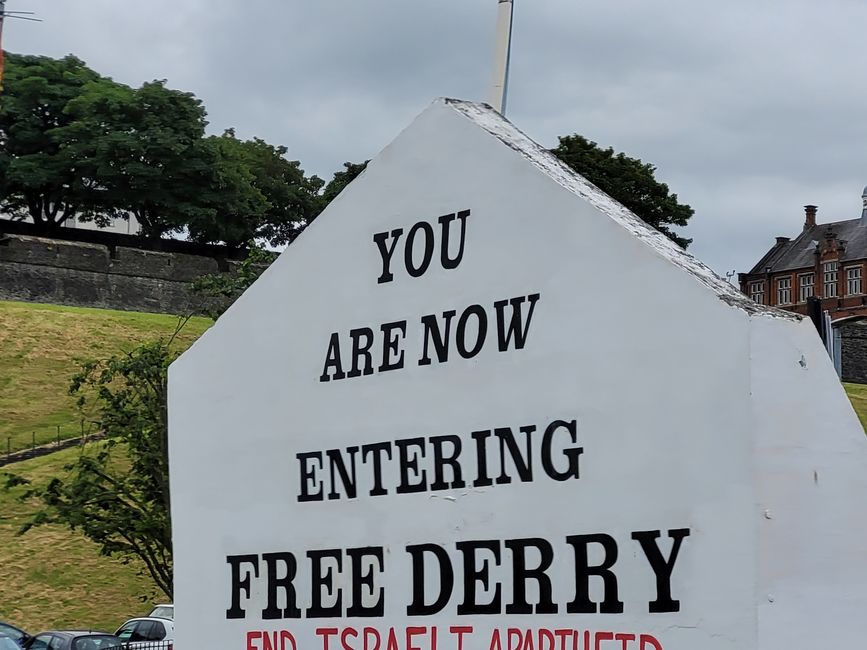
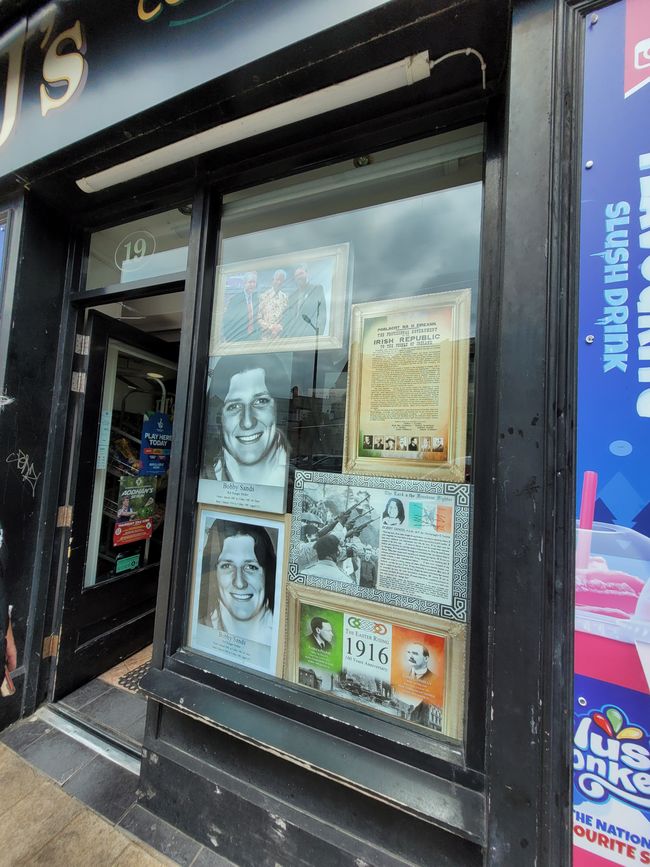
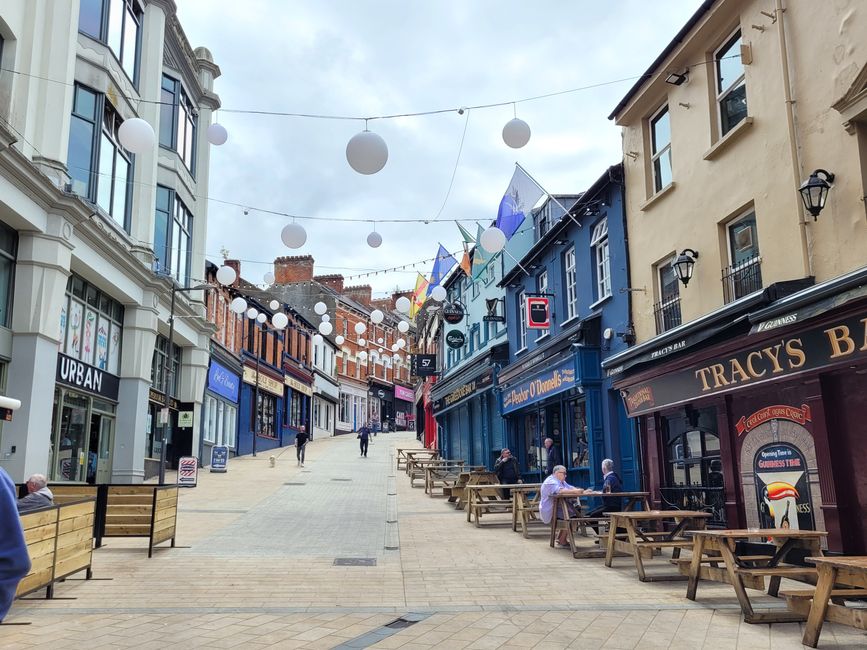
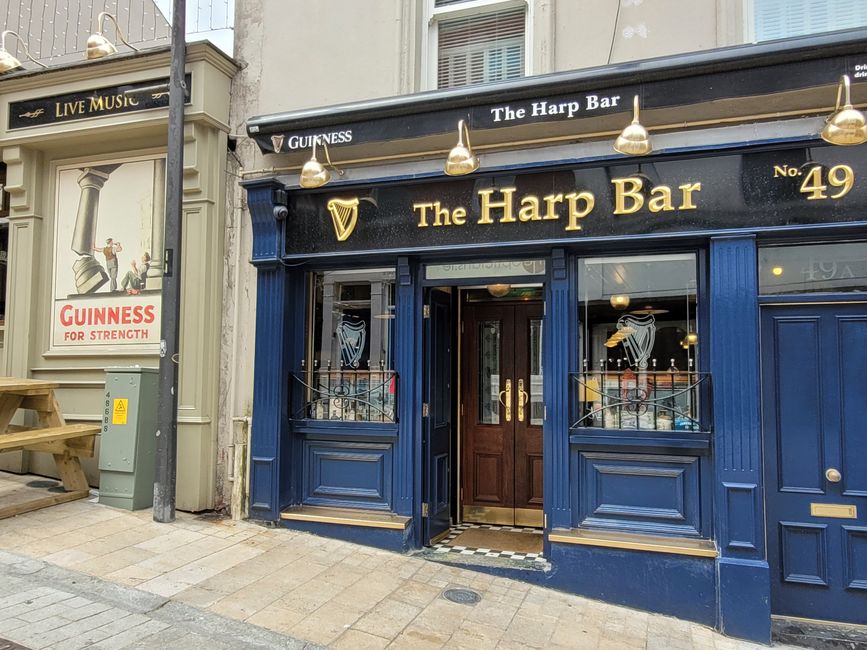
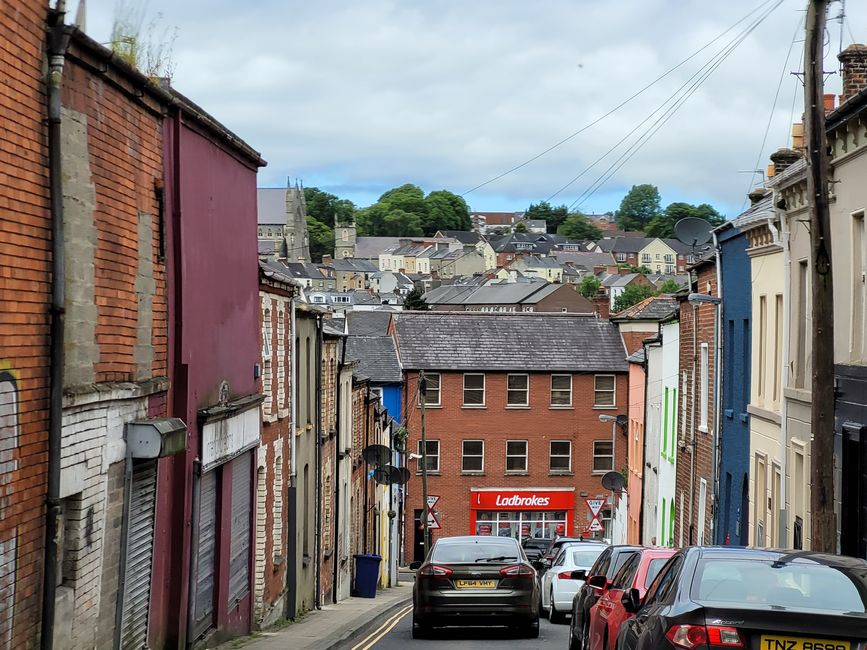

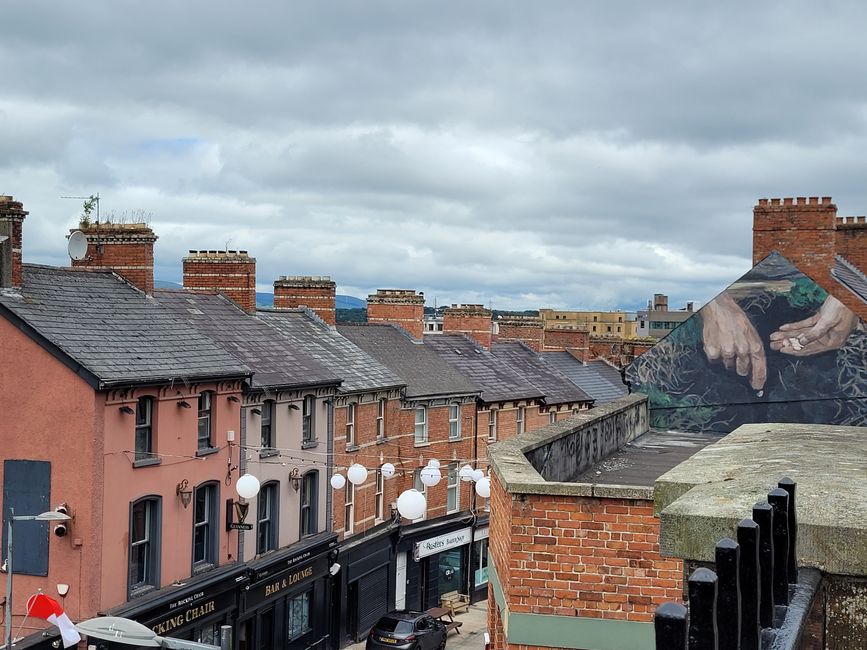
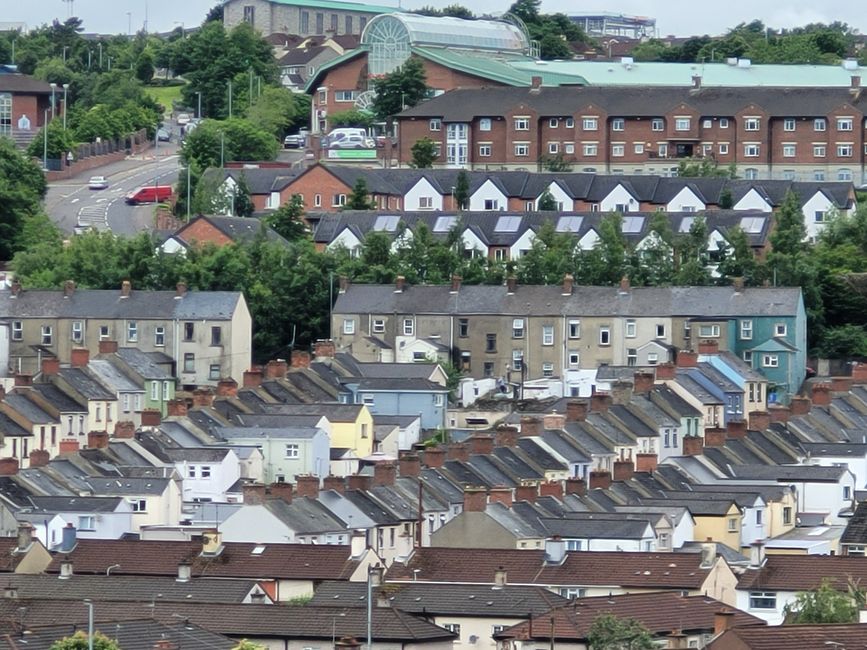
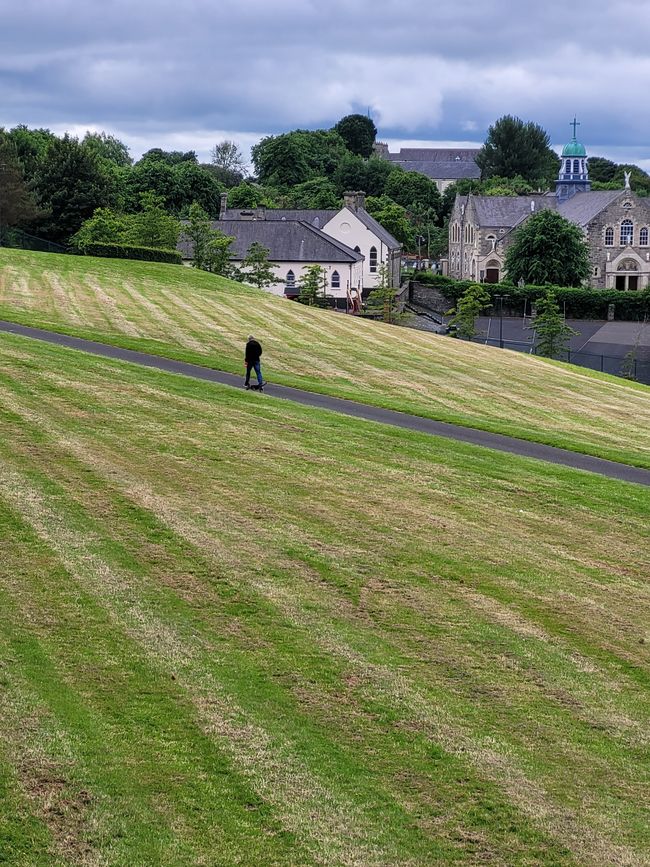
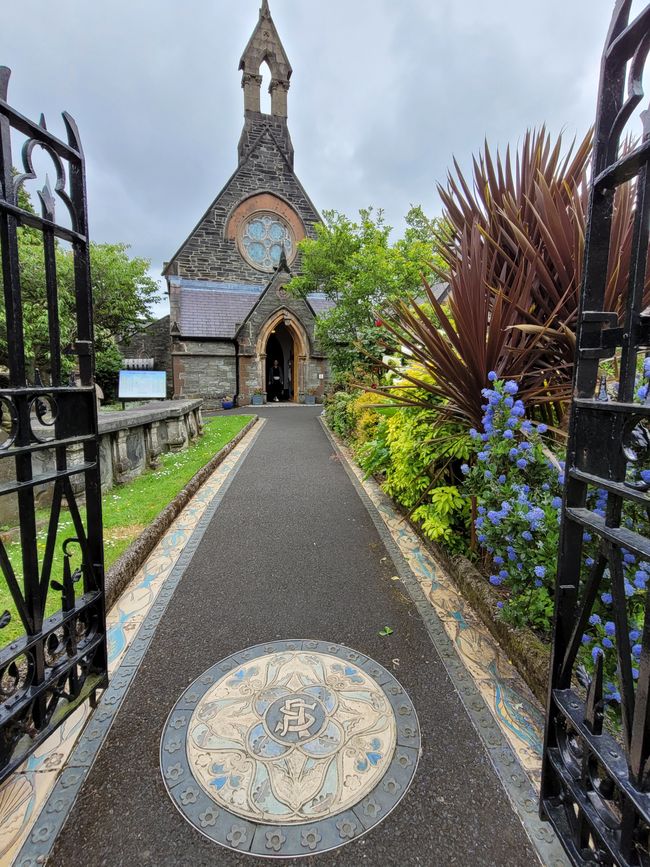
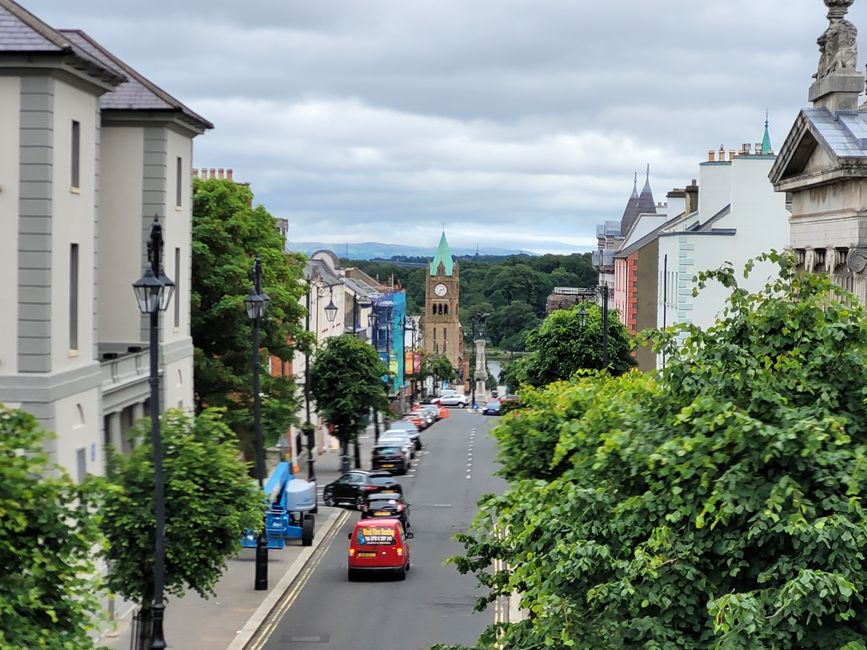
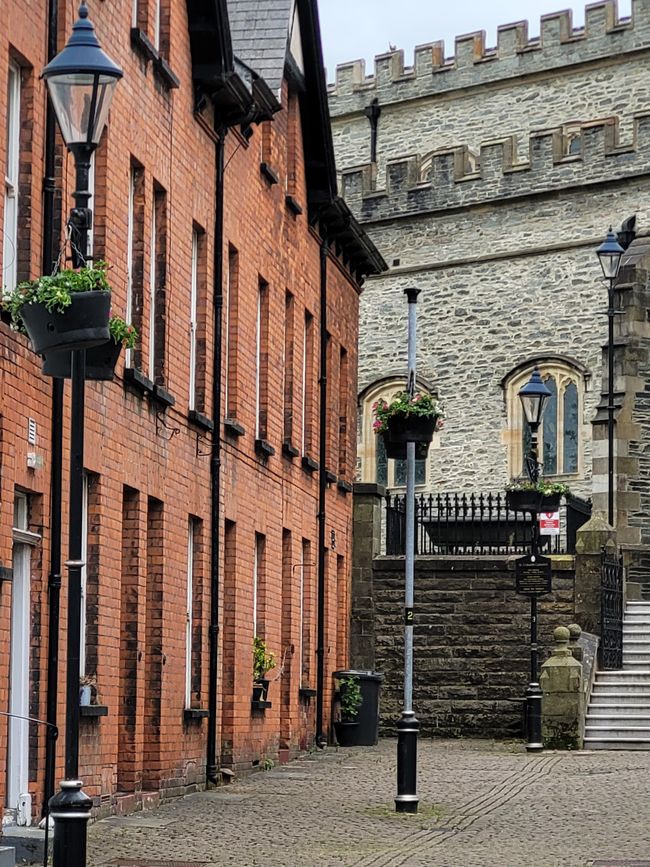
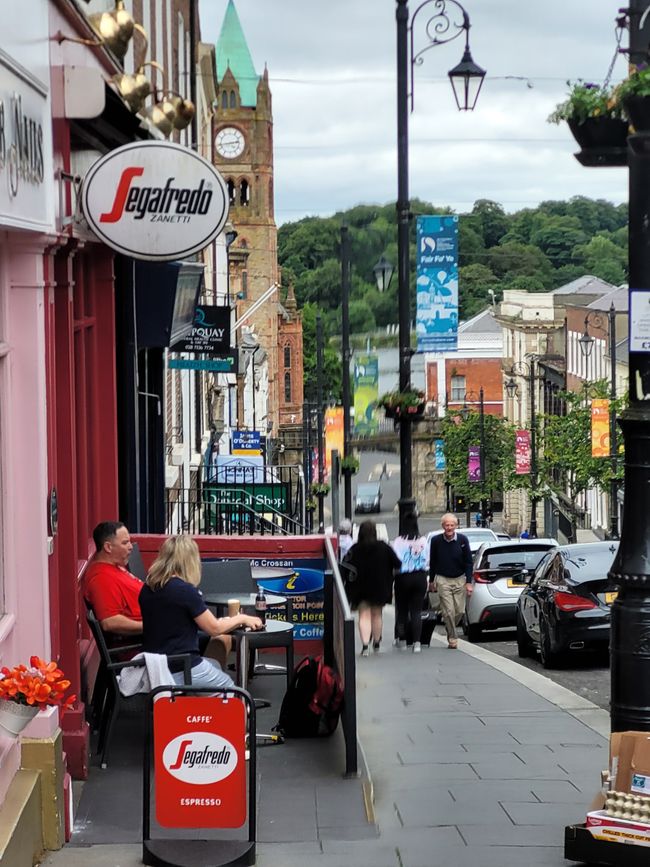
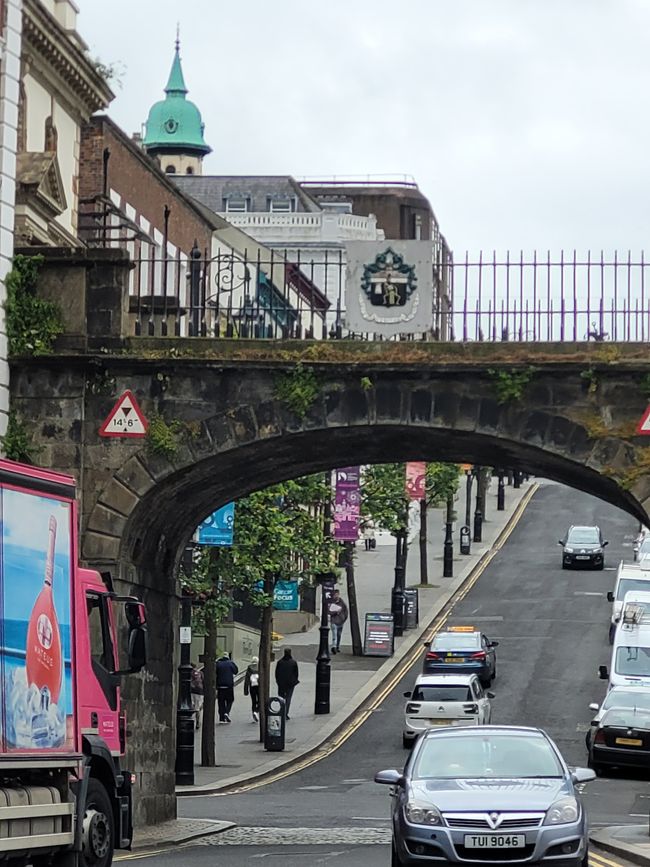
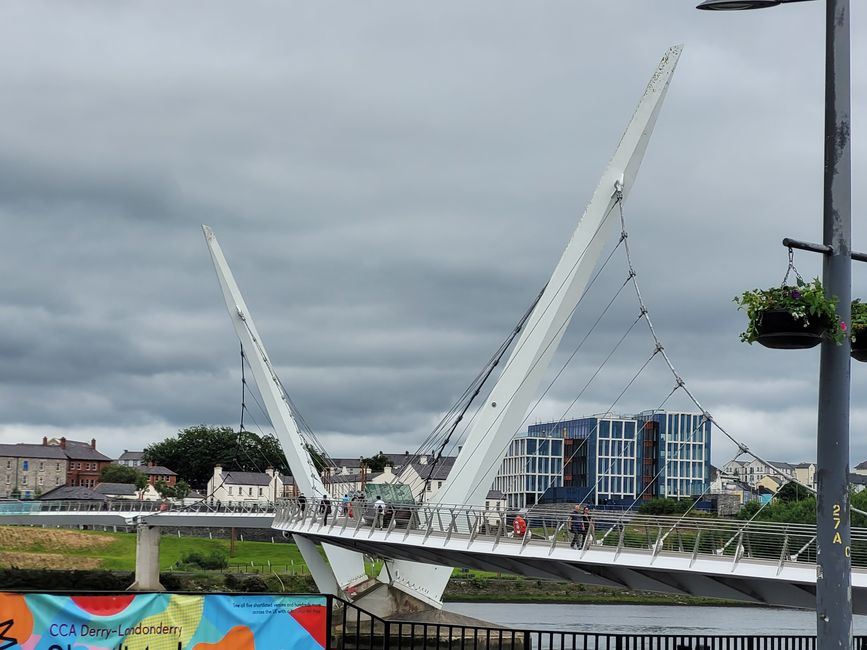
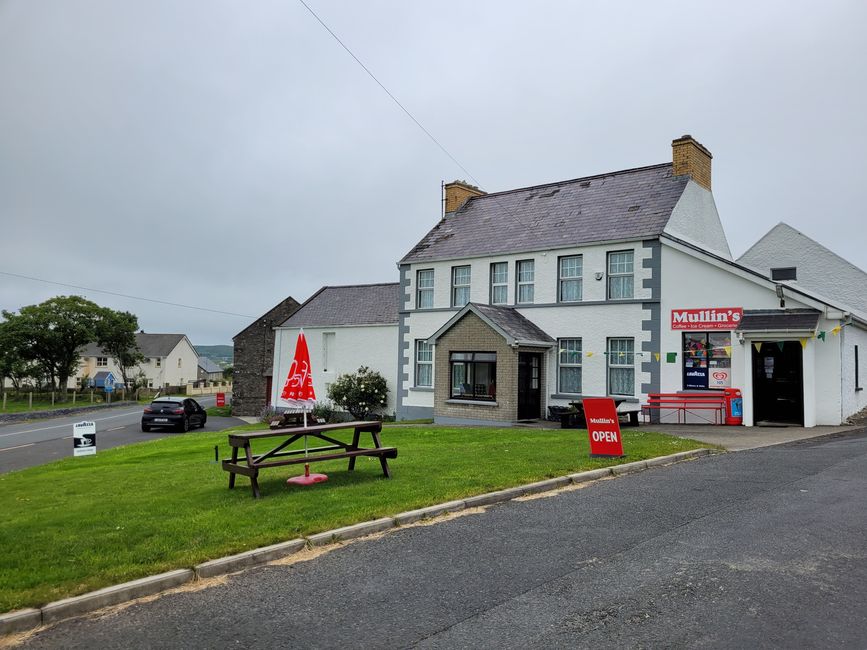
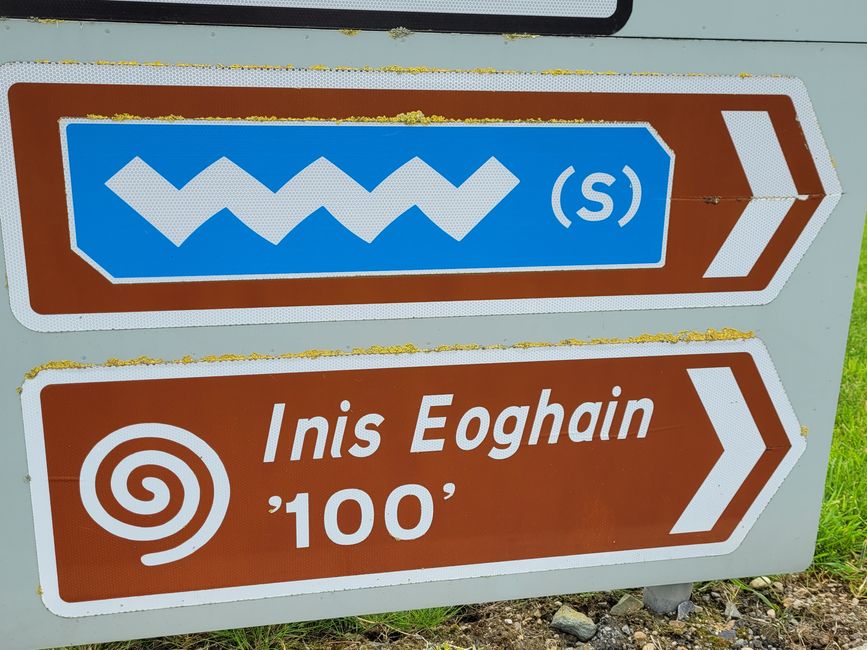
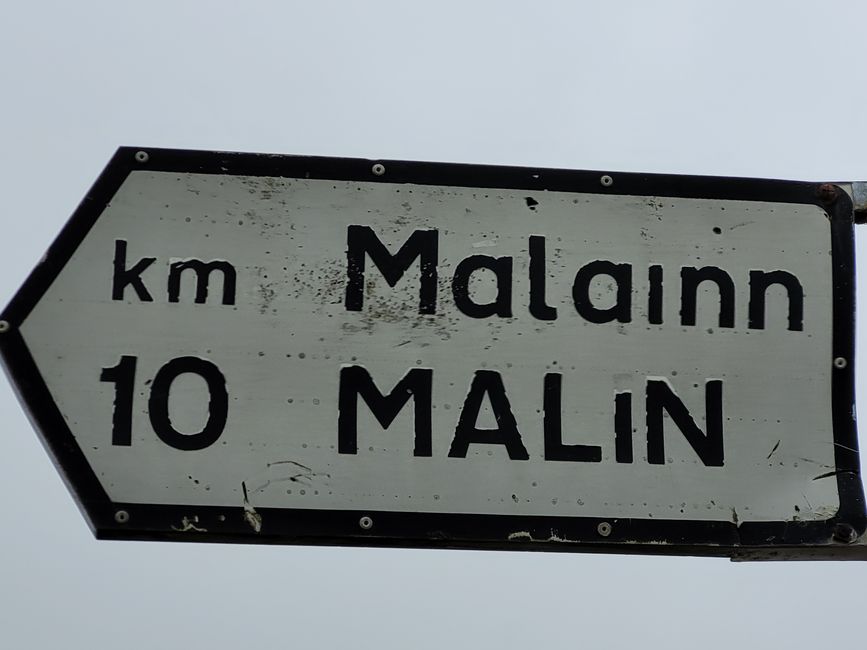
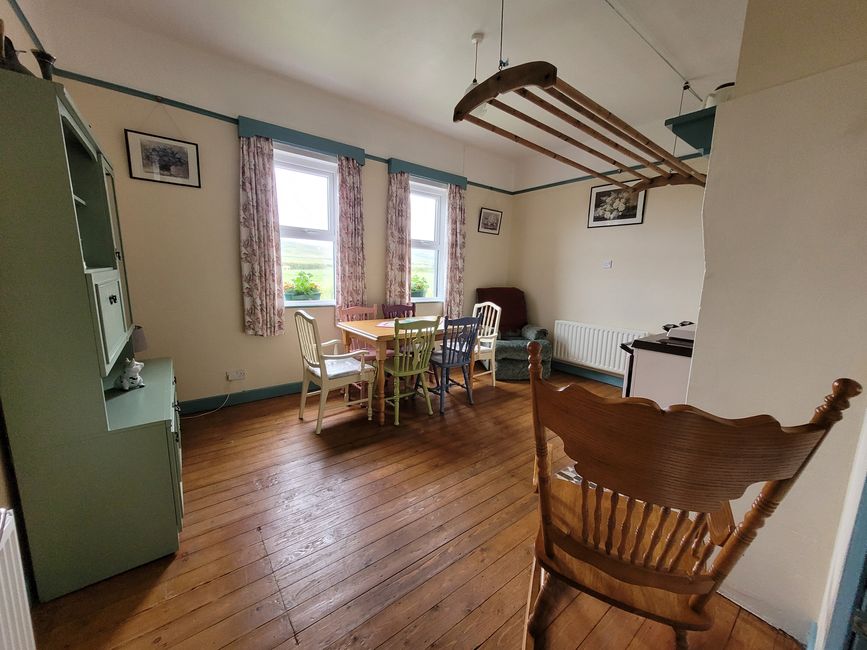
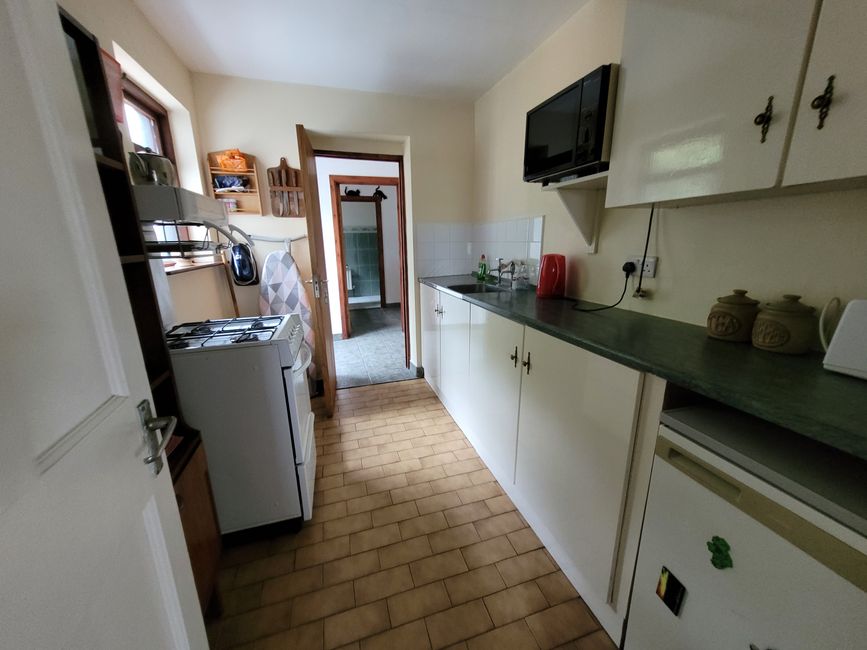
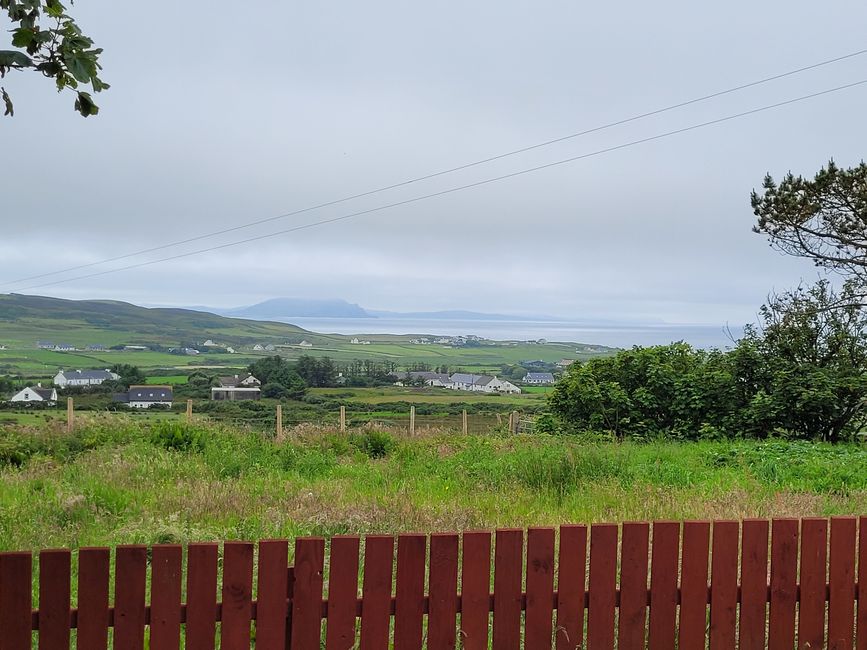
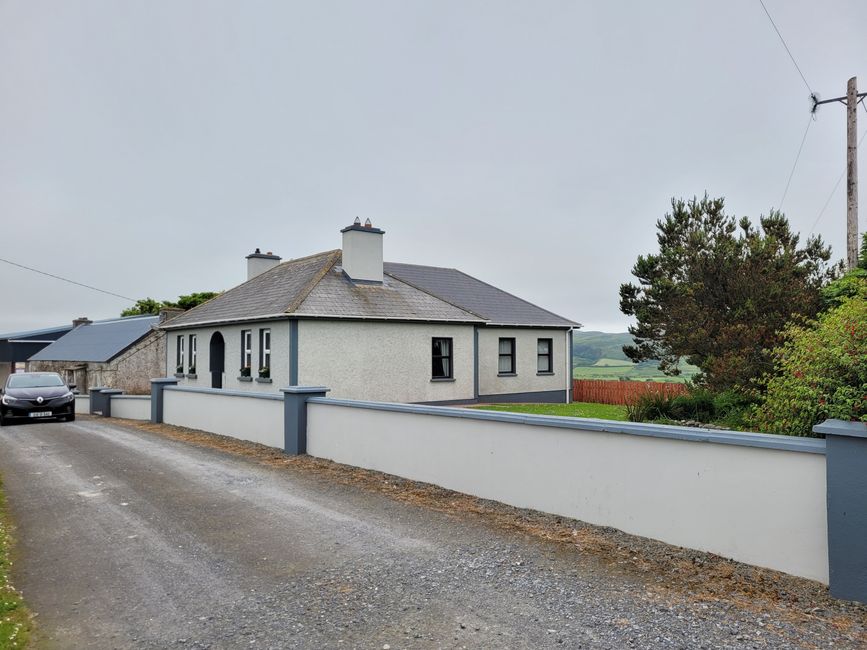
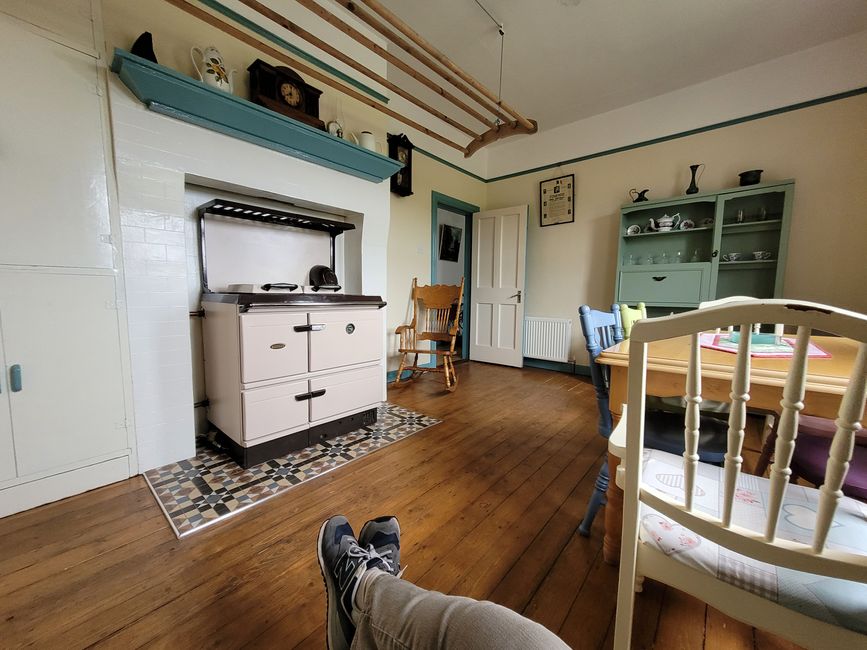
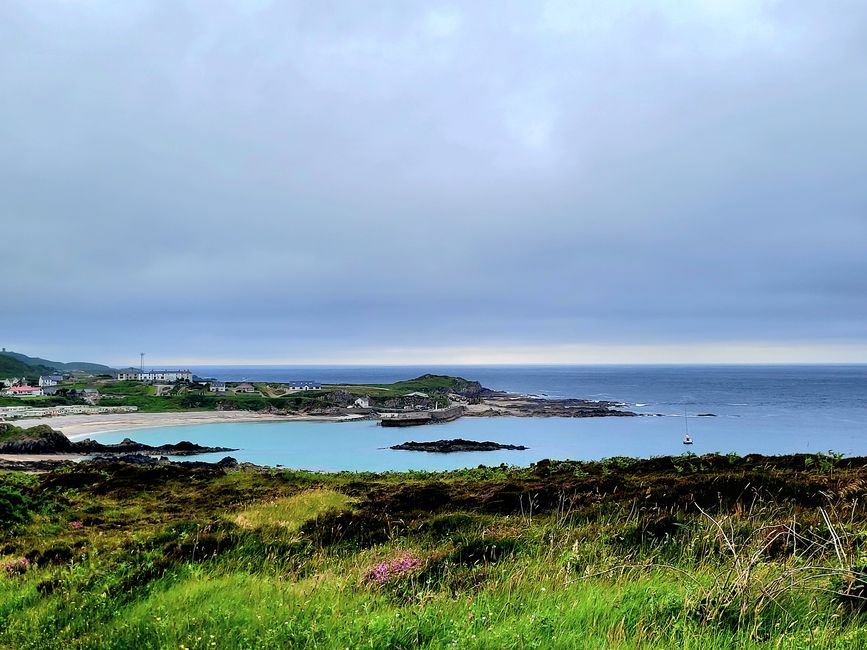
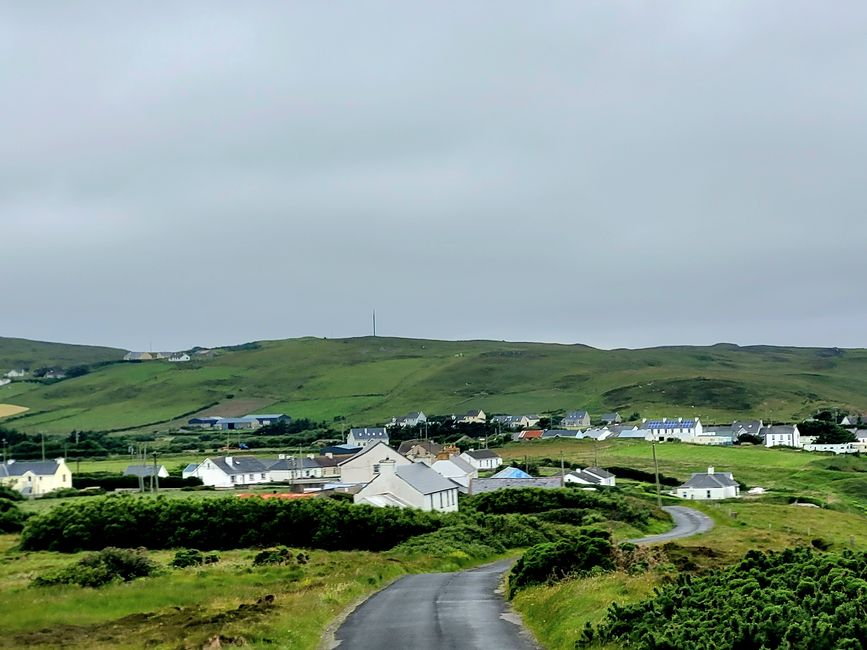
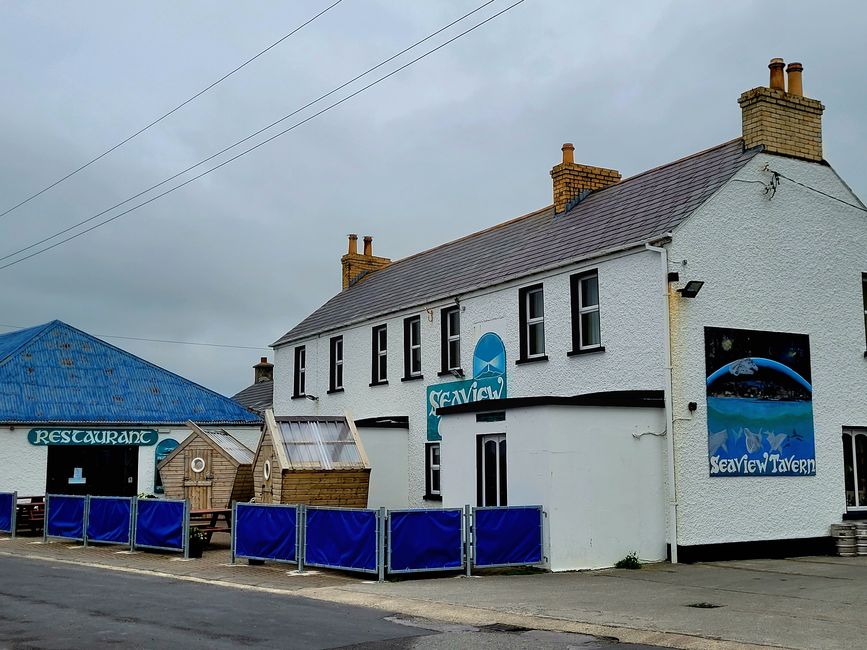
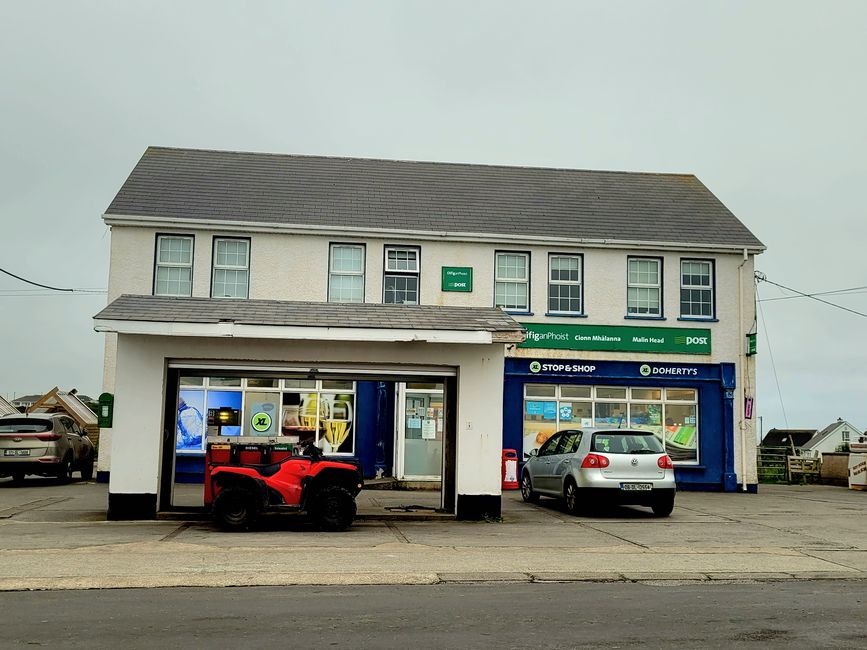
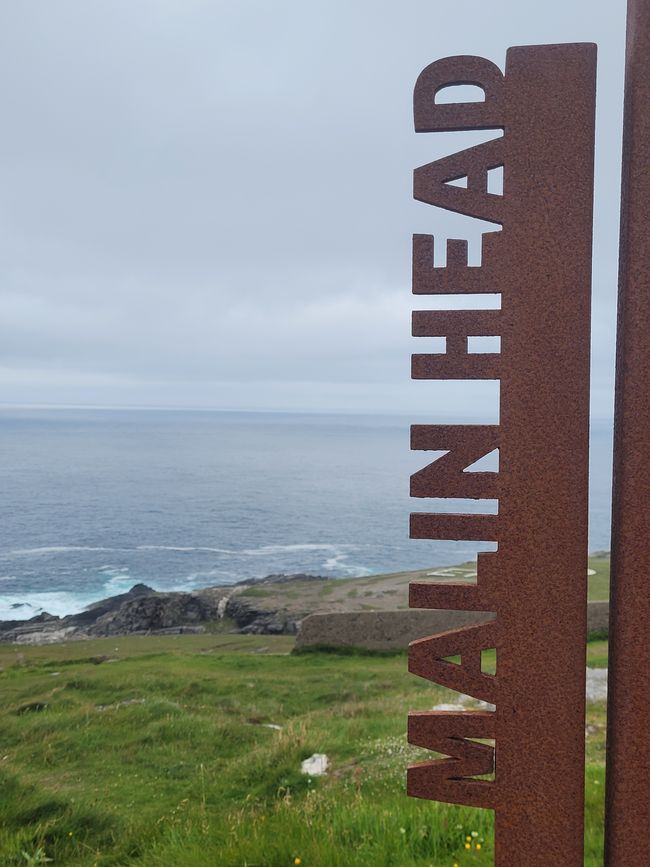
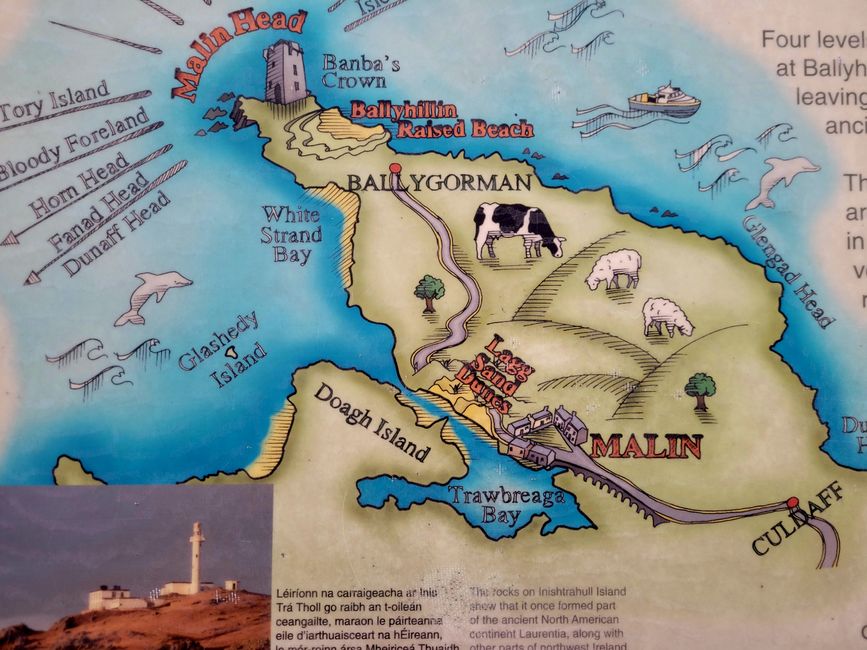
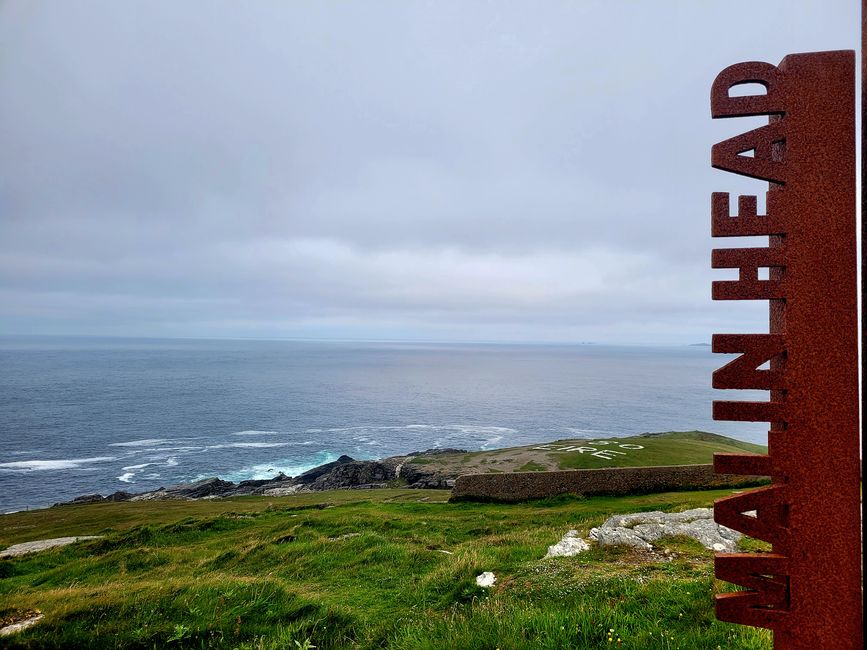
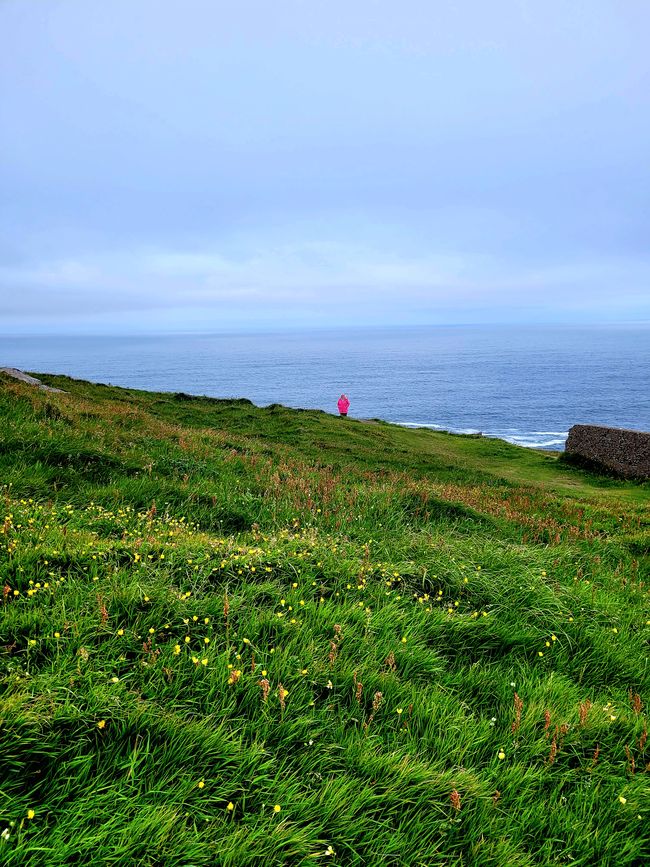
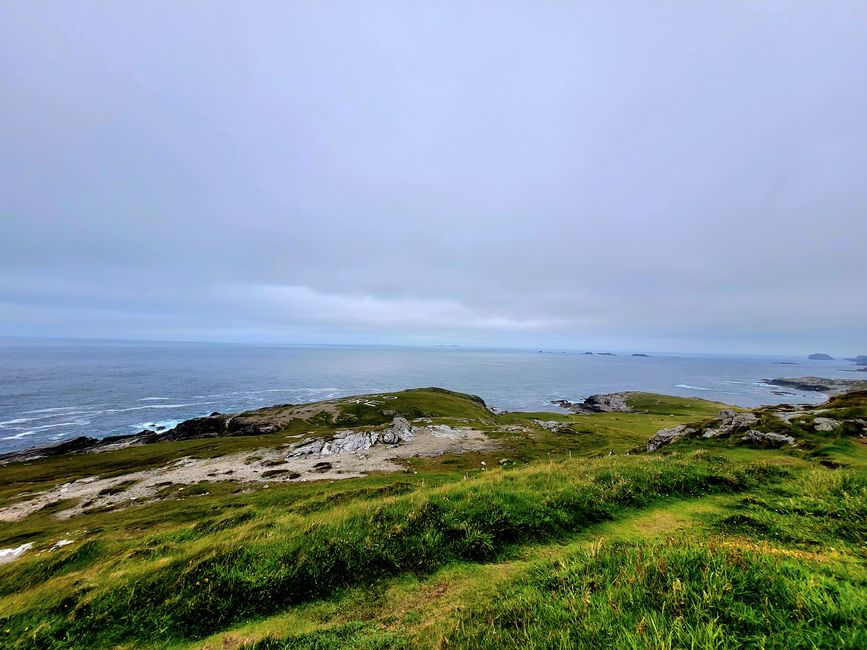
21.06.22
We start in gloomy weather and drizzle in Gortahork at 14 degrees, drive south around the Glenveagh National Park, pass by a pretty church, make a short photo stop, and follow a country road to Great Britain.


There is not even a border marker, sign, or anything similar to indicate that we have apparently crossed the border. From the speed limit of 30, we can guess that we are now in the land of miles, feet, and pounds. The gas stations display prices in euros and pounds.

The main reason for our visit was the history of the Bloody Sunday.


On January 30, 1972, British elite soldiers of a parachute regiment and other soldiers of the British army shot dead 14 people participating in a peace march. Among the victims were 7 children under the age of 20, as the registered march took place without the involvement of the IRA, which justified the peaceful nature of the demonstration. Although no soldier was injured or hit by a bullet, the British army claimed for decades that the victims were 'gunmen and bombers'.

The people were shot in the back or head, and the jackets of the victims can be seen in the Museum of Free Derry. It is inconceivable that it took 38 years for the bereaved and wounded to reach the point where David Cameron admitted in the House of Lords that the military had acted wrongly and that all the victims were innocent and unarmed. This was the result of a lengthy investigation and a crucial part of the efforts of the families over decades. A prosecution for the murders by the justice system resulted in charges against a soldier for triple murder and multiple counts of attempted murder, but the case was dropped and so the murders remain unsolved to this day. The museum is located exactly where the events took place and where several people were shot dead. We leave the museum deeply affected and still see the memorials and numerous murals on the neighboring houses, in front of which people were senselessly and on command murdered 50 years ago.

Everywhere, there are plaques documenting the events. It is very depressing, and we wonder why this city belongs to Great Britain and not to the Republic. With this, the British have documented a standpoint, the victory of the Unionists (loyal to the king/Protestants) over the Irish Catholics, whose suppression had lasted for hundreds of years, including the denial of basic rights, suffrage, etc. For these rights, people repeatedly took to the streets, were shot with tear gas and rubber bullets by the police, and later by the British army, until that fateful Sunday, January 30, 1972, which went down in Irish history as the Bloody Sunday.

After a nice woman gave us her unused parking ticket and we were able to cover our museum visit with it, I find another ticket that is still valid for 50 minutes when I return. We walk through the city, apparently in the right direction of the old town, and are very impressed by the city with its many nice, small shops, typical British mailboxes, and double-decker buses.

We find the old city wall, which offers a beautiful view of typical English houses. An old church, St. Columba, is more beautiful from the outside than from the inside.

We walk to the River Foyle, where the Peace Bridge has been trying since 2011 to connect what is surely difficult to connect. The Protestant district of Waterside which acted for the crown and whose residents were Unionists, and the Catholic district of Bogside, which houses the old town and where the riots and confrontations took place.

The IRA was founded here, and the people took to the streets for their rights that had been taken away from them years ago, were forced into the worst dwellings, and were deprived of the right to vote, as this was reserved for property owners and business owners only. Those who owned a company had multiple votes. Despite the number of people, the Catholic majority was always suppressed through election manipulations, and the minority of Unionists/Protestants ruled in Derry. The city is called Londonderry in Great Britain, and Derry in Ireland and under the Catholic majority of the city.


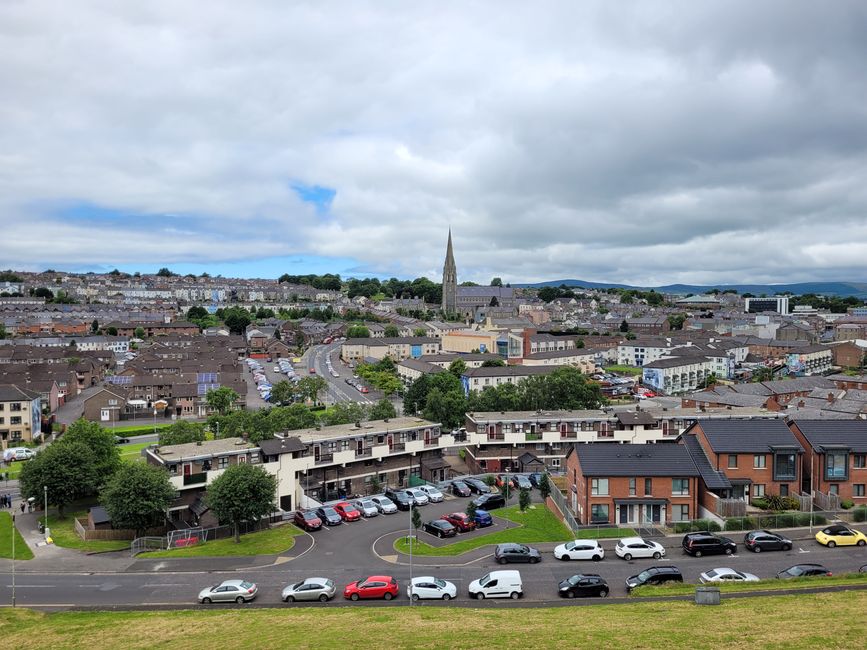

Our remaining journey always leads us north. We cross a bridge to reach the Inishmore peninsula and there in Ballygorman the northernmost point of our journey and almost the northernmost point of Ireland: Malin Head.
Here I wanted to be for the summer solstice and experience the longest day of the year. We have rented a remote holiday home here, which is actually huge, has three bedrooms, two bathrooms, a cozy living room (we can't get the TV to work and the internet is not really stable here either). The dining room has a fireplace, and the kitchen is very well-equipped. The terrace would theoretically be ideal for the glass of wine I dream of at midnight if the temperatures were not just above 10 degrees and nothing really tempts you to sit outside.




However, the weather is so autumnal that we quickly turn away from the viewpoint after a short stroll in Malin Head and look for one of the few restaurants nearby.





Amsa
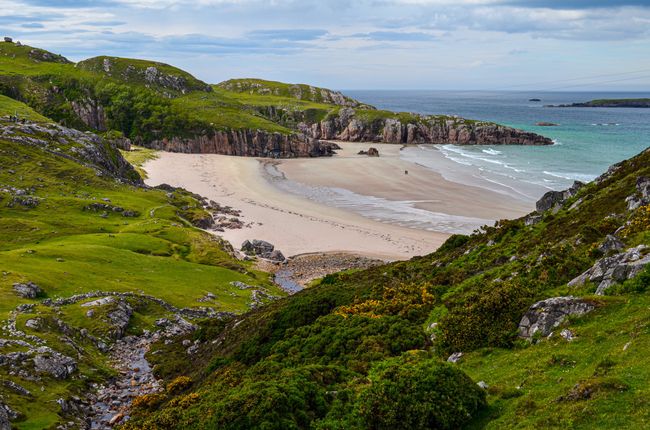
Rahoton balaguro Ƙasar Ingila
